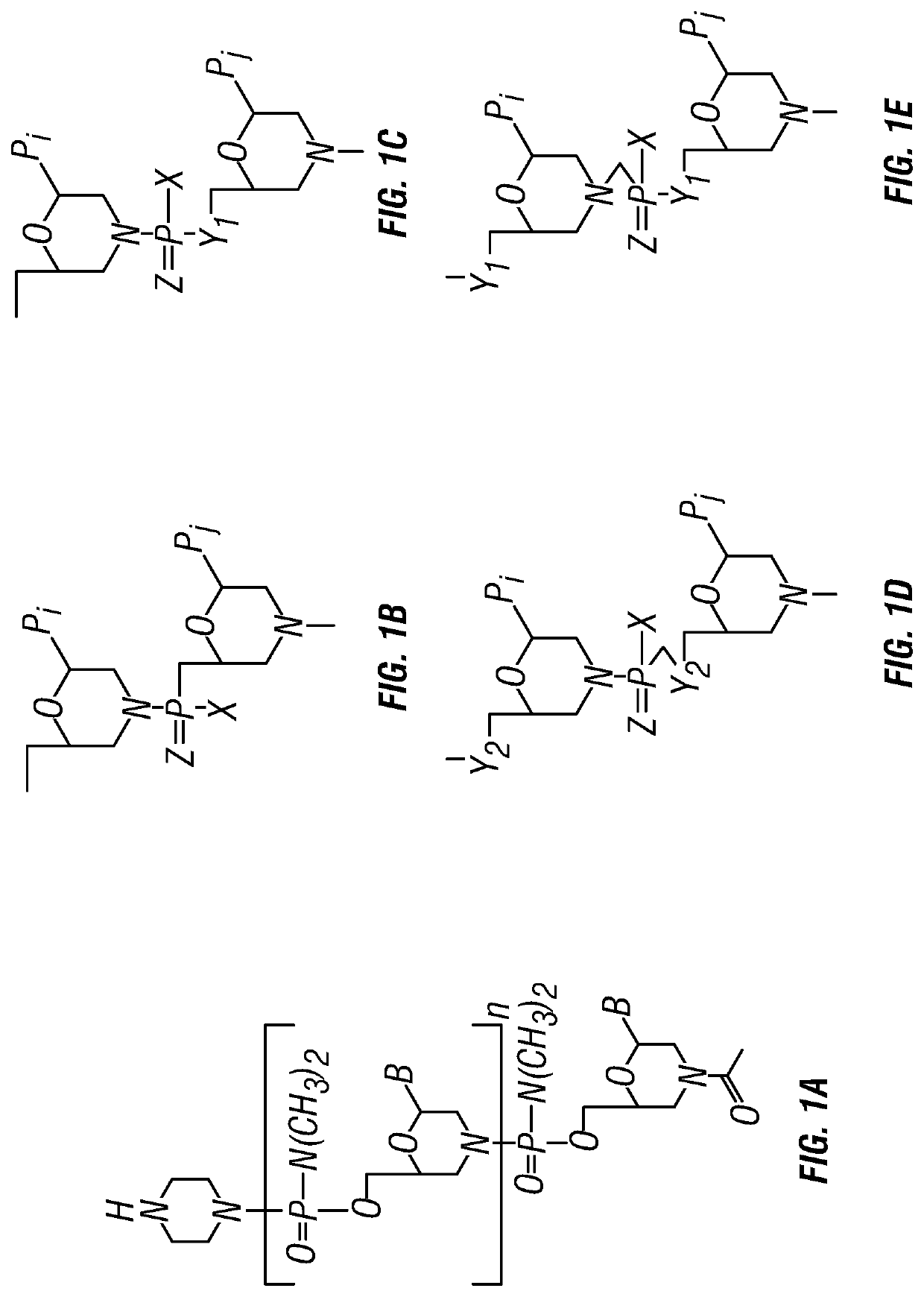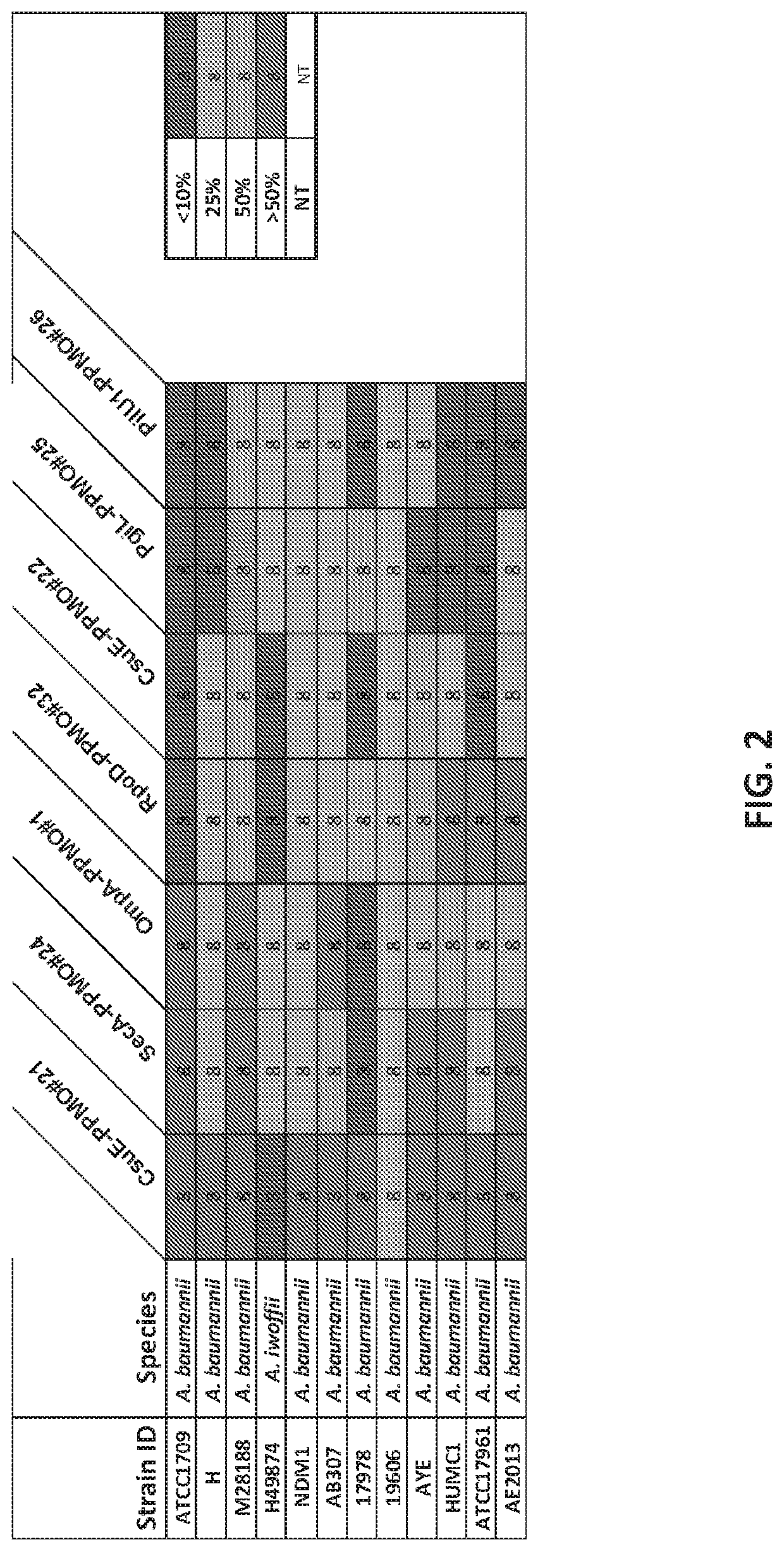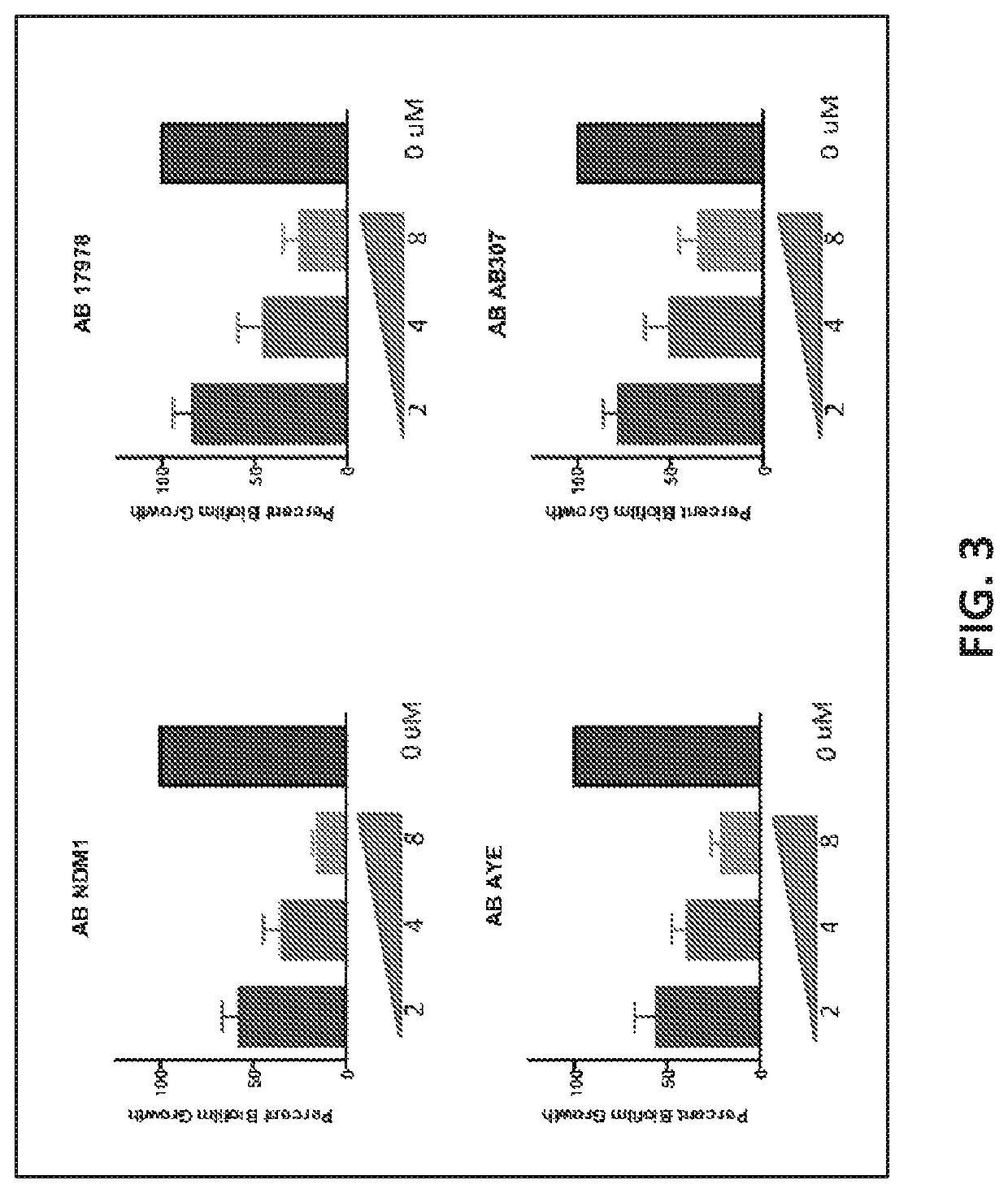Antisense antibacterial compounds and methods
a technology of morpholino oligomers and antibacterial compounds, applied in the field of antibacterial compounds, can solve the problems of antibiotic resistance, infection turns out to be untreatable, can develop into a chronic state, and down existing biofilms, so as to increase the susceptibility of antibiotic-resistant pathogenic bacteria, increase the susceptibility of antibiotic-resistant bacteria, and reduce the ability of certain pathogenic bacteria
- Summary
- Abstract
- Description
- Claims
- Application Information
AI Technical Summary
Benefits of technology
Problems solved by technology
Method used
Image
Examples
example 1
Development of Genus- and Gene-Specific PPMOs Against Specific Virulence Genes in the Multidrug-Resistant Pathogens Acinetobacter baumannii and Pseudomonas aeruginosa
[0347]Given the importance that biofilm plays in pathogenesis of infection, various biofilm or quorum-sensing genes were targets for PPMO development. While a number of PPMO targets were created and tested for their ability to inhibit Acinetobacter biofilm formation, the PPMO designed against CsuE was found to be most potent with over 83% of strains tested having a 50% or greater reduction in biofilm at a concentration of 8 μM (FIG. 2). This protein has been previously shown to play a role in attachment to surfaces and the development of biofilm. Most of the strains tested had a significantly greater reduction in biofilm formation at the target 8 μM concentration given as a single dose. Importantly for the development of PPMOs, activity is not linked to the underlying level of antibiotic resistance that a particular st...
example 2
PPMOs Targeted to Antibiotic Resistance Genes
[0351]PPMOs were designed, synthesized and tested that target two of the most troublesome resistance genes, New Delhi metallo beta lactamase (NDM-1) and Klebsiella pneumoniae carbapenemase (KPC). It was found that 2 PPMOs were extremely effective in reducing the MIC of meropenem and imipenem in NDM-1 strains. The data show that 4 μM of NDM-1 PPMO#18 reduced the MIC of meropenem from 64 to 4 μg / ml (FIG. 7A). The CLSI breakpoint for meropenem in K. pneumoniae is 8 μg / ml. Another PPMO targeted to NDM-1 (PPMO#19) was similarly effective, and allowed meropenem to reduce viability by more than 4 orders of magnitude at 8 μg / ml (FIG. 7B). A similar reduction in MIC of meropenem was seen in other strains of K. pneumoniae. Importantly, these PPMOs are targeted to a region of the NDM-1 gene that is highly conserved across other variations of NDM, so they should be effective against strains that express the other known variations of NDM.
[0352]Two PPM...
example 3
Preliminary Animal Tests
[0354]The NDM-1 PPMO#18 was tested in a mouse model of sepsis, using a strain of E. coli that expresses NDM-1. Mice were infected and treated by intraperitoneal injection of a freshly-prepared mixture of E. coli CVB-1 and NDM-1 PPMO (100 μg). Meropenem was then immediately administered subcutaneously. Treatments were administered every 6 h post-infection for the first 24 h, and the mice were monitored for survival for 7 days (FIG. 9a). The results show 92% survival of the mice treated concomitantly with PPMO and meropenem. This is a significant increase compared to mice treated with either PPMO or meropenem separately, or with co-administration of a scrambled PPMO (Ser) and meropenem, all of which died by 18 h (FIG. 9b). The mice treated with both NDM-1 PPMO and meropenem were healthier, as assessed by body temperature (FIG. 9c), and had significantly less bacterial burden in the bloodstream (FIG. 9d) and spleen.
[0355]The dose of PPMO was reduced to 33, 11, o...
PUM
| Property | Measurement | Unit |
|---|---|---|
| Tm | aaaaa | aaaaa |
| Tm | aaaaa | aaaaa |
| Tm | aaaaa | aaaaa |
Abstract
Description
Claims
Application Information
 Login to View More
Login to View More - R&D
- Intellectual Property
- Life Sciences
- Materials
- Tech Scout
- Unparalleled Data Quality
- Higher Quality Content
- 60% Fewer Hallucinations
Browse by: Latest US Patents, China's latest patents, Technical Efficacy Thesaurus, Application Domain, Technology Topic, Popular Technical Reports.
© 2025 PatSnap. All rights reserved.Legal|Privacy policy|Modern Slavery Act Transparency Statement|Sitemap|About US| Contact US: help@patsnap.com



